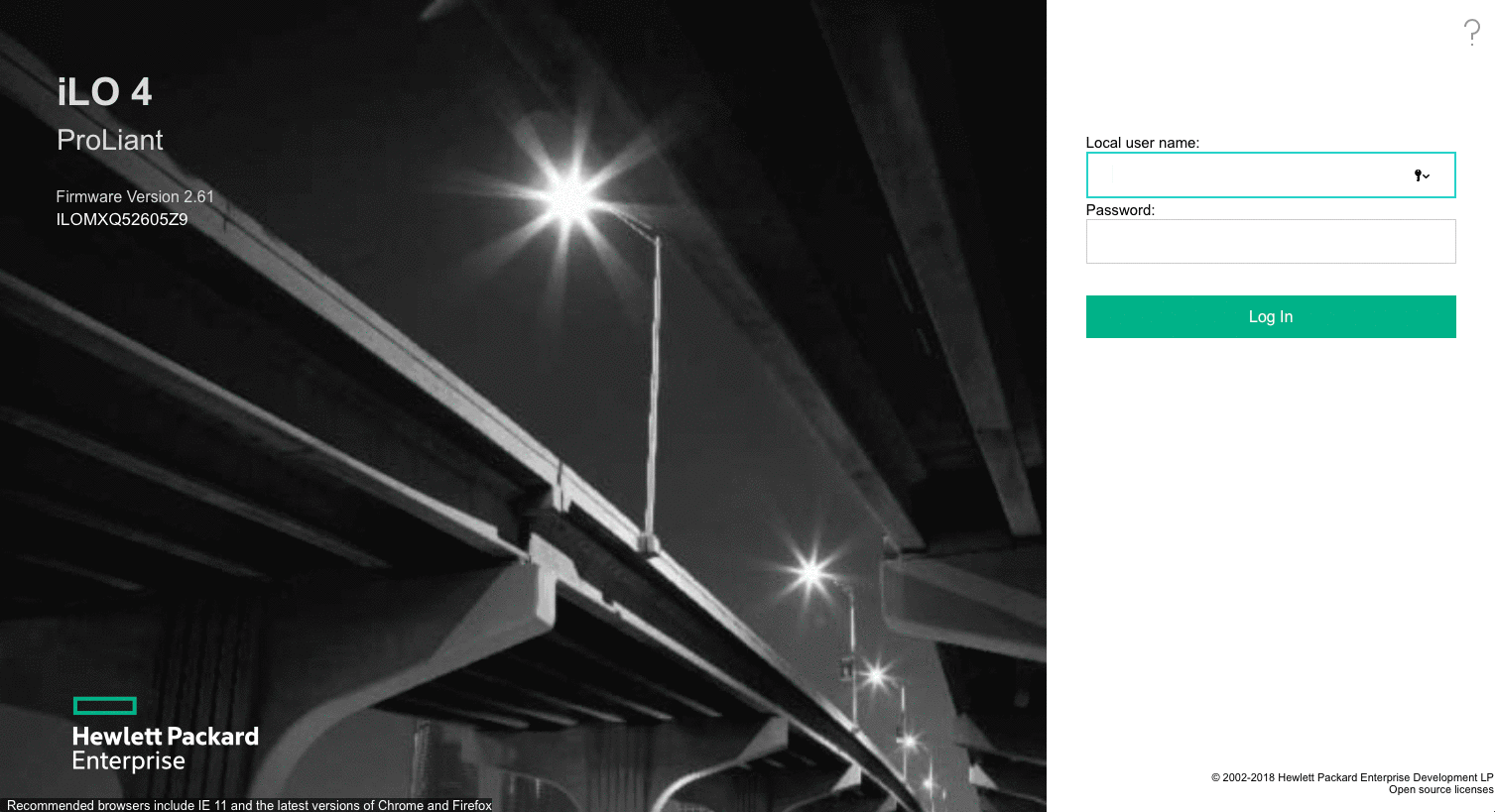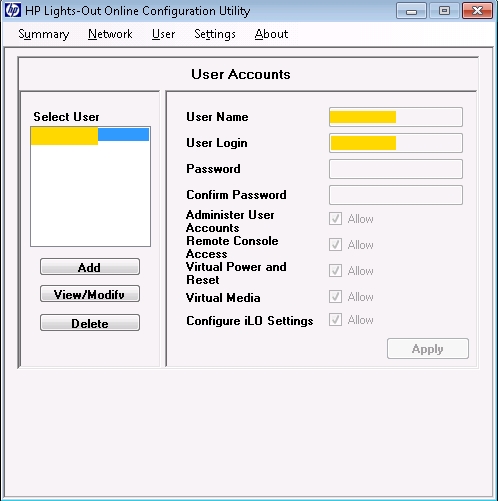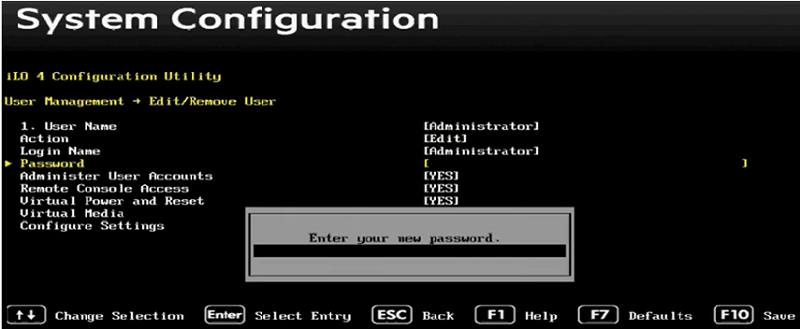

Hp ilo 4 configuration step by step install#
You can then close the iLO tool, restart the server, and install your OS from a CD, USB stick, or other installation medium. However, if you had multiple RAID disks managed by the Controller, they would all show here). (NOTE: since we cleared the previous RAID configurations, only one disk appears as an option. Now, we’ll select this RAID 10 drive to serve as the device’s bootable drive.įrom the Smart Array’s main menu, select Set Bootable Logical Drive/Volume.įrom here, you would select the disk that you want the server to boot to by choosing it to be the Primary Disk. Select All to include all available drives in the array. Select Clear Configuration and Create Array. Select RAID 5 and click Create Logical Drive.įor our last example, we’ll create a RAID 10 disk and then select it as the bootable drive. Then click Create Array.Īs you can see, by selecting different RAID types, the iLO tool automatically adjusts the specifications of Virtual Disk size. Select Create Array (the same process we followed from the initial RAID creation).Ĭlick Select All to select all of the drives available. We’ll now walk through another example with another type of RAID configuration, specifically utilizing all of the drives for a RAID 5 virtual disk. You can see the drive breakdown under the Arrays menu. In summary: we created a RAID 1 array, with a total of 3 disks and one disk to serve as a spare. Select the drive you wish to serve as the spare.

Because of the number of disks, only RAID 0 and RAID 1 are available.įor our purposes, we’d like to configure one drive to be a hot-swap spare. The Controller presents us with our RAID options.

Select the drives and click Create Array. Click Create Array.įor our first virtual disk, we’ll utilize 2 of our 4 drives. Note that the functions available would be dependent on the RAID controller installed.įor our purposes, we are creating a RAID disk. This RAID Controller has an HBA mode if you wish to configure a JBOD. (Note that this tutorial assumes that you have just received your server, in which case it’s best practice to clear any disks that we may have created during production.) On the Clear Configuration Prompt, click Clear. To set up a new RAID disk, select HP Smart Storage Administrator.įrom the HP Smart Storage Administrator menu, click on the Controller under the Available Device menu on the left.įrom the controller menu, select Configure. Within the Perform Maintenance menu, you have several options. You can think of Perform Maintenance as the “Advanced “or custom settings option.įor this tutorial, we will be creating unique RAID disks with spares, select Perform Maintenance. The steps would be the same for any G9 server and RAID card, the only variables depending on the capabilities of the RAID controller installed.Ĭhose Embedded RAID 1: Smart Array P440ar controller.Ĭhoose Exit and Launch HP Storage Administrator.Īt the iLO main menu, the options are to either Configure and Install – which provides a “wizard” to perform a clean install and system reset to defaults – or Perform Maintenance, where you can delete or add drives on existing RAID disks.
Hp ilo 4 configuration step by step how to#
We’ll demonstrate how to create multiple RAID configurations, set up one drive to be a hot spare, and select one of the created virtual disks to be the server’s bootable disk.

The server is an 360 G9, and the RAID card is a P440ar controller. In this video tutorial, we’ll provide step-by-step instructions for setting up a RAID array in an HPE G9 server through HPE’s remote management tool, iLO. Our customers often ask for assistance in setting up a RAID array in their new TechMikeNY server.


 0 kommentar(er)
0 kommentar(er)
